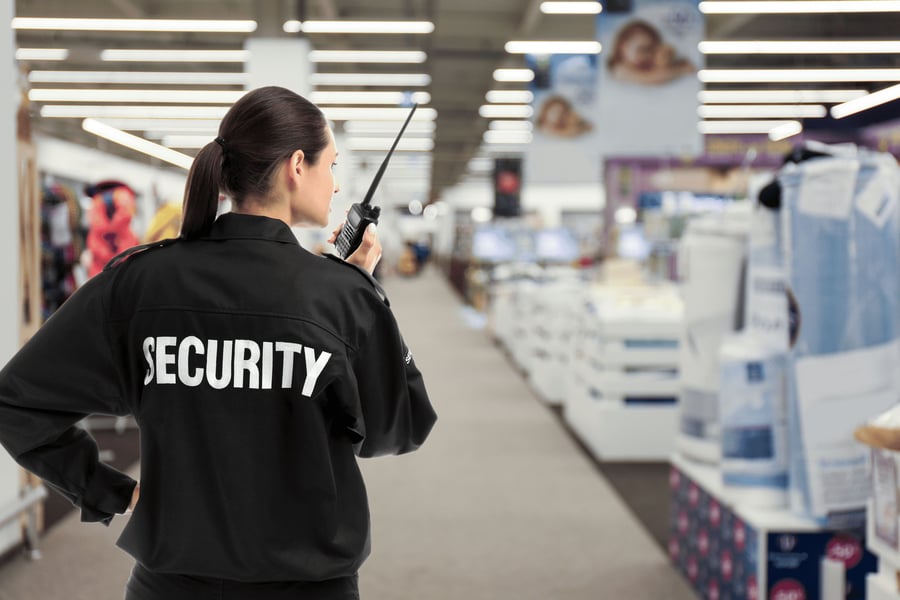A Brief History of Loss Prevention and Asset Protection and a Look at What's Next
General Pedro Ramos
Pedro Ramos

From Store Cop to Strategic Advisor
Not so long ago, Security Teams oversaw the protection of goods, watching for both shoplifters and employee theft. Often staffed by retired cops, they used rudimentary tools and manual processes that provided clues to investigate. The Security Team was reactionary to problems by reviewing sales receipts, walking the store at night, or even doing bad check collections.
Today, Loss Prevention (LP) and Asset Protection (AP) professionals have taken on a more proactive approach. On top of that, LP and AP experts have added technical skills that started with simple spreadsheets and have grown into using advanced data analytics platforms to pinpoint potential issues. The initial roots of LP added tools like cameras and clunky asset protection devices but now include tools like electronic article surveillance (EAS) tracking and radio frequency identification (RFID) technology.
LP professionals continuously evolve to keep up with the ever-changing consumer theft environment. For example, simple shoplifting has grown into sophisticated global organized retail crime (ORC) networks. Employees have also become more cunning while stealing, often trying to outsmart POS and other retail technologies. As a result, LP professionals were forced to adapt, grow, and lean increasingly on their analytics tools.
Along the way, respect for LP professionals grew. According to an Agilence study ‘The Evolving Perceptions of Value within Loss Prevention Departments’, 81% of leaders now see LP as a critical resource, needing the data to respond to growing issues proactively. As a result, 95% of leaders now see LP as a respected partner and a resource that deserves a seat at the table for strategic decisions.
The same study found that 88% of leaders agree that LP is essential in creating and monitoring policies, processes, and technologies that support business decisions. LP expertise directly impacts the bottom line beyond their traditional responsibilities for fraud and theft. While some still have a legacy view of LP, most of the C-Level today hold LP in high regard as a valuable partner who provides fast, accurate reporting. To top it off, it is not unusual for LP to have a significant fiscal impact on shrink, sales, margin, and brand protection which add millions to the bottom line.
Price Overrides: More than a Register Correction
LP now has a more significant contribution than just shrink. Retailers now depend on LP for data insights to drive profits. In many instances, LP departments are the technology hub, with more devices and information including POS data, cameras, alarms, heat mapping software, facial recognition technologies, and a host of other applications. These integrated platforms are now the source of data that leaders need so they can control costs and drive revenue.
One simple example is pricing, including price overrides, which can dramatically impact the bottom line. LP is uniquely positioned to add value to pricing decisions. The LP department’s access to data and insights drives strategic pricing decisions and operational policies used at the register.
Retailers need to design competitive pricing policies and ensure they are correctly executed. A Deloitte consulting study revealed the many factors that support pricing and sound policies that come together to optimize revenue. Some of these include:
- Strategic pricing policy – Are your prices market competitive? Do they align with what your customer will pay? When customers ask for price adjustments, retailers increase price overrides and the potential for loss.
- Tag compliance – Are your products tagged correctly? When price tags don’t match your POS system, price overrides increase.
- Override analysis – Does your company monitor the overall price override rate, up/down trends, and annual impact on the bottom line? Pinpointing changes to overrides will redirect attention to specific problems that need addressing.
- Override Policy – Do your price override policies balance control and flexibility? Executing operational procedures is at the core of a successful pricing policy.
- Training and Monitoring – Are all managers and employees trained adequately in price overrides, and does your department monitor them consistently? These staff members are on the front line of price overrides and need education on authority and procedures for overriding prices.
- Data integrity – Is the pricing data fed to dashboards and KPIs correct? Reporting the right data guides decisions makers and makes monitoring more effective.
Because of their data focus, LP departments can help leaders successfully deploy their strategic pricing policy while also consistently following it on the sales floor. Pricing directly impacts revenue and requires professionals who can identify, analyze, monitor, and control price setting, tagging, and overrides. LP has now advanced to the level where they are policy leaders, providing the data needed to drive revenue and enhance profits.
What's Next? Innovation and Consistency Guides Profit Enhancement Leaders
The Security Team has evolved immensely from their days of just walking the store floor. As LP leaders increase their professionalism, technical abilities, and strategic influence, there’s no doubt that their current role as Profit Enhancement leaders will add strategic value and contribute to organizational growth. Part of the reason for this change is the need to constantly adapt to ever-changing environments.
Our study, ‘The Evolving Perception of Value within Loss Prevention Departments’ found that 85% of leaders agree that these LP professionals are continuing to innovate, lead, and experiment beyond current routine assessments, measurements, and monitoring, becoming a core asset to the team. As retailers continue to embrace artificial intelligence (AI), machine learning (ML), and other similar advancements, Profit Enhancement professionals will be at the forefront, learning to apply these technologies to new retail challenges.
From price overrides to shrink, growing problems require a consistent approach that includes a clear definition of problems, identifying potential solutions, analyzing results, improving programs, and implementing consistent controls. While new challenges are on the horizon, the foundation of LP will play a pivotal role in ensuring retailers stay successful.
We're sharing advice from 20 Loss Prevention and Asset Protection leaders that will change how the industry operates. Download your copy today.
Learn more about Loss Prevention & Asset Protection.
Related Articles

How can Leaders Really Measure the Impact of Loss Prevention Efforts?
In LPM’s recent survey, Evolving Perception of Value within Loss Prevention Departments, diverse opinions indicate the percep...
How to Embrace Omnichannel in Any Industry
Creating an omnichannel customer experience has been a priority in retail for years. The goal of an omnichannel strategy is t...
Remembering Gus Downing: A Loss Prevention Pioneer
It is with heavy hearts that we at Agilence mourn the passing of Gus Downing, a true luminary in the loss prevention (LP) and...Subscribe to our blog
Receive free educational resources like exclusive reports, webinars, and industry thought leadership articles straight to your inbox.


